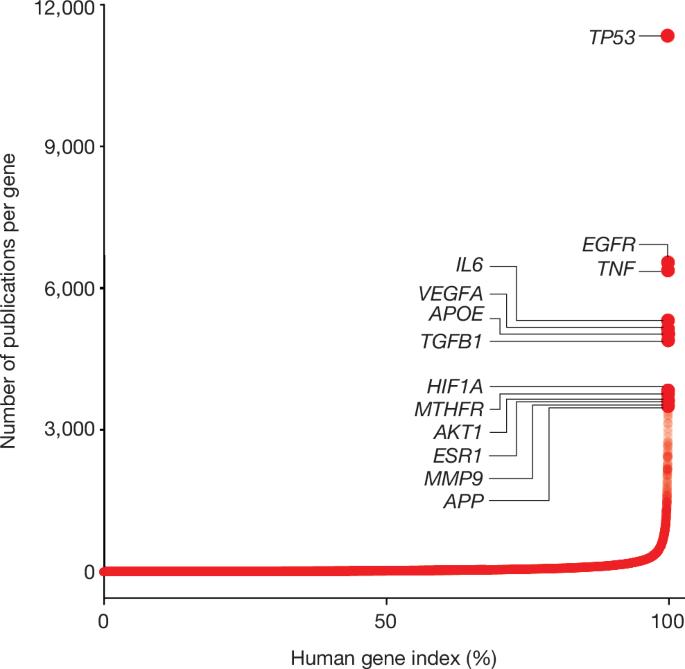MorPhiC联盟:朝向所有人类基因的功能表征
IF 48.5
1区 综合性期刊
Q1 MULTIDISCIPLINARY SCIENCES
引用次数: 0
摘要
功能基因组学和人类细胞模型的最新进展大大提高了我们对人类基因组结构和调控的理解。然而,我们对人类基因的分子功能的掌握仍然不完整,并且偏向于特定的基因类别。细胞中无等位基因的分子表型(MorPhiC)联盟旨在通过在体外多细胞系统中创建与所有人类基因的无等位基因相关的分子和细胞表型的综合目录来解决这一差距。从这个角度来看,我们提出了MorPhiC联盟的战略愿景,并讨论了产生零等位基因的各种策略,以及所涉及的挑战。我们描述了细胞模型和可扩展的表型读数,将用于该联盟的初始阶段,重点关注1000个蛋白质编码基因。由此产生的分子和细胞数据将被汇编成一个目录的零等位基因表型。本阶段开发的方法将为将这些方法扩展到所有人类蛋白质编码基因建立最佳实践。所产生的资源——包括工程细胞系、质粒、表型数据、基因组信息和计算工具——将提供给更广泛的研究团体,以促进对人类基因功能的更深入的了解。本展望讨论了细胞中无等位基因分子表型(MorPhiC)联盟的策略和挑战,该联盟旨在对所有人类基因中与无等位基因相关的分子和细胞表型进行编目。本文章由计算机程序翻译,如有差异,请以英文原文为准。

MorPhiC Consortium: towards functional characterization of all human genes
Recent advances in functional genomics and human cellular models have substantially enhanced our understanding of the structure and regulation of the human genome. However, our grasp of the molecular functions of human genes remains incomplete and biased towards specific gene classes. The Molecular Phenotypes of Null Alleles in Cells (MorPhiC) Consortium aims to address this gap by creating a comprehensive catalogue of the molecular and cellular phenotypes associated with null alleles of all human genes using in vitro multicellular systems. In this Perspective, we present the strategic vision of the MorPhiC Consortium and discuss various strategies for generating null alleles, as well as the challenges involved. We describe the cellular models and scalable phenotypic readouts that will be used in the consortium’s initial phase, focusing on 1,000 protein-coding genes. The resulting molecular and cellular data will be compiled into a catalogue of null-allele phenotypes. The methodologies developed in this phase will establish best practices for extending these approaches to all human protein-coding genes. The resources generated—including engineered cell lines, plasmids, phenotypic data, genomic information and computational tools—will be made available to the broader research community to facilitate deeper insights into human gene functions. This Perspective discusses strategies and challenges for the Molecular Phenotypes of Null Alleles in Cells (MorPhiC) Consortium as it aims to catalogue the molecular and cellular phenotypes associated with null alleles of all human genes.
求助全文
通过发布文献求助,成功后即可免费获取论文全文。
去求助
来源期刊

Nature
综合性期刊-综合性期刊
CiteScore
90.00
自引率
1.20%
发文量
3652
审稿时长
3 months
期刊介绍:
Nature is a prestigious international journal that publishes peer-reviewed research in various scientific and technological fields. The selection of articles is based on criteria such as originality, importance, interdisciplinary relevance, timeliness, accessibility, elegance, and surprising conclusions. In addition to showcasing significant scientific advances, Nature delivers rapid, authoritative, insightful news, and interpretation of current and upcoming trends impacting science, scientists, and the broader public. The journal serves a dual purpose: firstly, to promptly share noteworthy scientific advances and foster discussions among scientists, and secondly, to ensure the swift dissemination of scientific results globally, emphasizing their significance for knowledge, culture, and daily life.
 求助内容:
求助内容: 应助结果提醒方式:
应助结果提醒方式:


